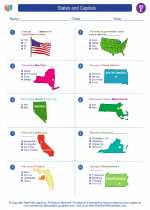Employment
Employment refers to the state of having paid work. It is a crucial aspect of a society as it provides individuals with a source of income, a sense of purpose, and the ability to contribute to the economy. There are various types of employment, including full-time, part-time, temporary, and self-employment.
Types of Employment
- Full-time Employment: Involves working a standard number of hours per week, typically 35-40 hours, and often comes with benefits such as health insurance and paid time off.
- Part-time Employment: Involves working fewer hours than a full-time job, often with no benefits or limited benefits.
- Temporary Employment: Refers to a job that has a predetermined end date, often used for seasonal work or specific projects.
- Self-employment: Involves working for oneself, either as a freelancer, consultant, or small business owner.
Factors Affecting Employment
Several factors can influence employment, including:
- Economic conditions: The state of the economy, including factors such as GDP growth, inflation, and unemployment rates, can impact job availability.
- Technological advancements: Automation and technological developments can lead to job displacement in certain industries while creating opportunities in others.
- Education and skills: The level of education and skills possessed by individuals can affect their employability and the types of jobs available to them.
- Government policies: Laws and regulations related to labor, taxation, and business can impact the job market and employment opportunities.
Employment and the Economy
Employment plays a significant role in the overall economy. When more people are employed, there is increased consumer spending, leading to economic growth. Conversely, high unemployment rates can lead to reduced consumer confidence and slower economic activity.
Study Guide
- Define employment and explain its importance in society.
- Identify and describe the different types of employment.
- Explain how economic conditions, technological advancements, education, and government policies can affect employment.
- Discuss the relationship between employment and the economy.
- Examine the impact of unemployment on individuals and the society as a whole.
[Employment] Related Worksheets and Study Guides:
.◂Social Studies Worksheets and Study Guides Fifth Grade. States and Capitals
Study Guide States and Capitals
States and Capitals  Worksheet/Answer key
Worksheet/Answer key States and Capitals
States and Capitals  Worksheet/Answer key
Worksheet/Answer key States and Capitals
States and Capitals  Worksheet/Answer key
Worksheet/Answer key States and Capitals
States and Capitals 

 Worksheet/Answer key
Worksheet/Answer key
 Worksheet/Answer key
Worksheet/Answer key
 Worksheet/Answer key
Worksheet/Answer key

The resources above cover the following skills:
Geography: A student should be able to utilize, analyze, and explain information about the human and physical features of places and regions. A student who meets the content standard should:
Understand that a region is a distinct area defined by one or more cultural or physical features.